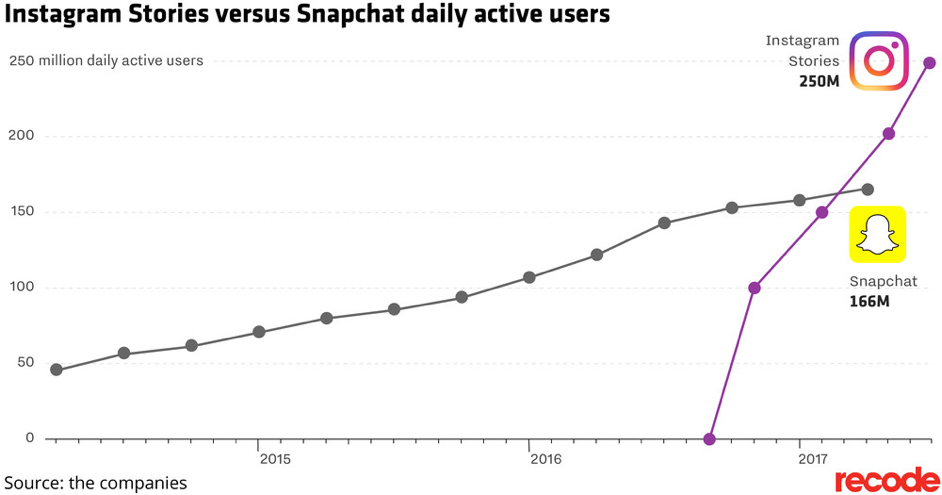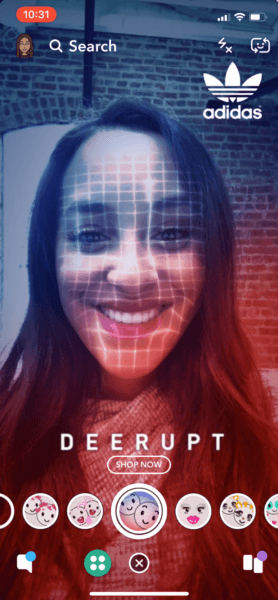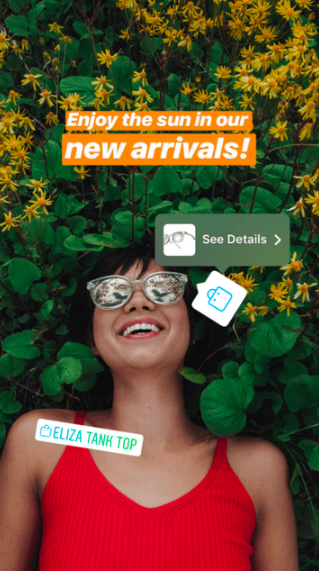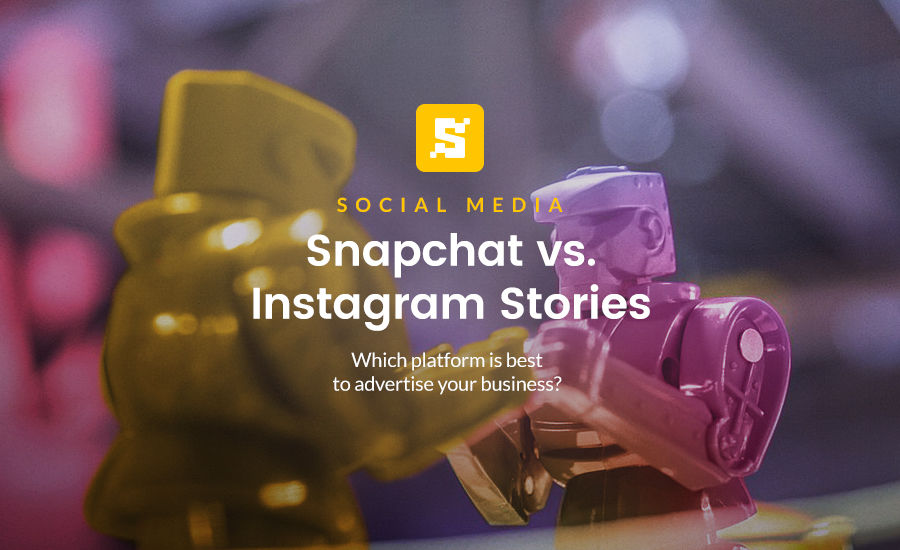Disappearing photo stories have become the biggest trend in social media marketing as people can share their everyday lives in real-time with the tap of a camera. Add in some filters, a couple GIFs and some funky text, and you have a highly interactive platform that millions of people love.
Choosing Between Snapchat and Instagram Stories: Which Works Best for Your Brand?
Both Instagram Stories and Snapchat are highly interactive platforms that draw in pretty specific demographics. So the question begs to be asked, which is more lucrative for your brand to advertise on?
Who uses Snapchat and who uses Instagram?
Instagram recently reached the one billion milestone, with 300 million accounts using Instagram Stories. Similarly, Snapchat has more than 300 million monthly active users. There’s an underlying notion that Instagram Stories and Snapchat Stories are one-in-the-same, but the two platforms are quite varied.
Let’s take a look at the demographics:
Snapchat demographic
- 45 percent of Snapchat users are between 18 and 24 and 71 percent of users are under 34 years old.
- 30 percent of U.S. millennial internet users use Snapchat daily.
- 70 percent of users are female.
- 50 percent of male college students use the platform for selfies, while that number is 77 percent for female college students.
Instagram demographic
- 80 percent of Instagram users are from outside the U.S.
- 32 percent of all internet users are on Instagram.
- 59 percent of internet users between 18 and 19 use Instagram.
- 33 percent of internet users between 30 and 49 use Instagram.
- 68 percent of Instagram users are female.
There’s also a stark contrast in growth between Snapchat and Instagram Stories. Granted, these numbers are based on Snapchat and Instagram Stories only, whereas Instagram as a whole had a strong user presence established prior to Stories. This contributed easily to the swift increase.

Image credit: Recode
Advertising features and functionalities
Snapchat Stories and Instagram Stories serve the same purpose for users: people show off their day-to-day lives in 24-hour photo and video compilations to share with followers. Both apps offer real-time content, so brands can boost brand awareness, announce limited-time offerings and start a conversation in meaningful ways.
Snapchat ad functionalities
- CTA buttons and swipe-ups
- Sponsored lenses and geofilters
- AR shoppable lenses
- Retargeting capabilities
- Operates on Snapchat’s own ad manager
Instagram Stories ad functionalities
- CTA swipe-ups
- Shoppable features and videos with tagged products
- Shop in-app
- Retargeting capabilities
- Polls and more editing functionality
- Carousel ads (ideal for product showcases)
- Operates through Facebook Ad Manager
When it comes to filters and interactive lenses, Snapchat is the clear winner. Snapchat has always conquered in that category and they do it quite well. The app also mixes AR shopping capabilities with sponsored lenses for interactive buying experiences.

Image credit: Marketing Land
Despite Snapchat’s AR shoppable lenses, Instagram seems to triumph in the social commerce category. Its in-app shopping functionality is advanced and always improving, not to mention, Instagram has a strong influencer presence.

Image credit: Instagram
What are the cost efficiencies?
Results from advertising on these platforms are pretty staggering. Consider this: Instagram’s average CPM is between $5-$6 and average CPC falls within 56 cents and 72 cents. As for Snapchat, the platform recommends setting a swipe up (CPC) bid of $1-$3.
Because Instagram uses the Facebook Ad Manager, you decide how much you want to spend daily or over the campaign’s lifetime. Minimum budgets for most currencies start at $1 a day and vary depending on frequency. Snapchat Ads, however, start at $3,000 and go up from there.
Instagram said in a press release that their survey found users watch Stories to keep up with brands they’re interested in and to view products relevant to them. Instagram naturally invokes that “need it now” feeling among users because of its ability to showcase positive lifestyles. For this reason, shoppers on Instagram spend 85 percent of the week exploring new products and services.
The key takeaway? Ad costs on Snapchat are much higher than Instagram advertising costs, but keep in mind that Snapchat garners 1.5 times more visual attention than Instagram and sees 5 times more swipe-ups than the average click-through-rate.
Who’s the winner?
Whether you choose to advertise on Snapchat or Instagram will depend on many factors. The best place to find your answer is in the demographics and average ad performance. More teens use Instagram than Snapchat, but younger demographics exist widely on both platforms. Instagram, however, appeals to an older age group, as well.
Snapchat users are a highly specific, hyper-engaged group of people. Most are in high school or college, and the usage is widely spread across America.
As for Instagram, the majority of users are outside the U.S. Brands targeting global audiences and older age groups will see a higher success rate here. Especially for those companies with younger audiences, it’s beneficial to explore advertising on Snapchat and Instagram Stories together. It’s also worth considering that nearly half of Snapchat users aren’t even using Instagram.
Snapchat and Instagram Stories, while similar, offer different features that will resonate differently among multiple age groups. Snapchat has always been great for targeting special events and promoting mobile apps, while retail industries thrive on Instagram.
All in all, consider which app your audience is most present on and what they’re most engaged with. Perhaps it’s neither app. Don’t get lost in only targeting one platform because a majority of your audience uses it. Performance relies heavily on your ad creative and how you resonate with your audience.








